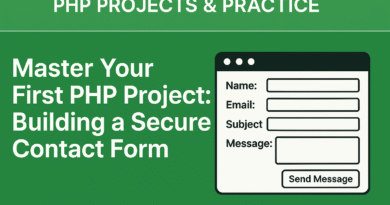HTML – Unlock the Secrets of HTML Entities: Making Your Web Content Sparkle!
Unlock the Secrets of HTML Entities: Making Your Web Content Sparkle!
Have you ever wondered how websites display those tricky characters like copyright symbols, arrows, or even just a simple greater-than sign without breaking the code? The answer lies in a powerful yet often overlooked aspect of HTML: HTML Entities.
In the vast landscape of web development, clarity and precision are paramount. While HTML is excellent for structuring your content, certain characters have special meanings within the code itself. If you try to directly type a “<” symbol, for instance, your browser might interpret it as the start of a new HTML tag, leading to unexpected and often frustrating display errors. This is where HTML entities come to the rescue, acting as clever placeholders for these special characters.
What Exactly Are HTML Entities?
Think of HTML entities as a secret handshake between your code and the web browser. Instead of using the actual character, you use a specific code that the browser then translates into the correct symbol for your users to see. This ensures your content renders exactly as you intend, free from misinterpretations or broken layouts.
Why Are They So Important for Your Web Presence?
Beyond simply preventing errors, HTML entities are crucial for a truly professional and user-friendly website:
- Displaying Reserved Characters: The most fundamental use is for characters that have a special meaning in HTML. For example:
<for<(less than)>for>(greater than)&for&(ampersand)"for"(double quotation mark)'for'(apostrophe – especially useful in attribute values) Without these, your code could literally fall apart!
- Controlling Whitespace with Precision: One of the most frequently used entities is
(non-breaking space). Ever tried to add multiple spaces in HTML only to find the browser collapsing them into one? forces a single, non-collapsible space, giving you granular control over your text layout. This is invaluable for ensuring proper spacing in specific situations, like between words in a logo or for precise alignment. - Enriching Your Content with Special Symbols: Want to add a copyright symbol (©), a registered trademark (®), an arrow (→), or even a mathematical symbol (∑) to your text? HTML entities make this effortless. Instead of struggling with complex character sets or image files, you can simply insert the relevant entity code. This not only keeps your code clean but also ensures these symbols are accessible and scalable.
- Enhancing Accessibility and SEO: While often subtle, using HTML entities correctly contributes to better web accessibility. Screen readers and other assistive technologies can correctly interpret these entities, providing a richer experience for all users. Furthermore, well-formed HTML, which includes proper entity usage, is a positive signal for search engines, potentially aiding your website’s visibility and organic reach.
Common and Powerful HTML Entities You Should Know:
Here’s a quick cheat sheet of some essential HTML entities to get you started:
©for © (copyright symbol)®for ® (registered trademark symbol)€for € (Euro currency symbol)“and”for “ and ” (curly quotation marks – often preferred for typography)—for — (em dash)–for – (en dash)✓for ✓ (checkmark symbol – using its hexadecimal code)
Best Practices for Mastering HTML Entities:
- Prioritize Clarity: While you can use numeric entities (e.g.,
©for ©), using named entities (e.g.,©) is generally more readable and easier to remember. - Use When Necessary: Don’t overdo it! Only use entities when the character has a special meaning in HTML or when you need to display a character not easily typed directly.
- Validate Your HTML: Always validate your HTML code to catch any potential errors related to entities or other syntax issues.
- Embrace Resources: There are many excellent online resources and cheat sheets that list a comprehensive range of HTML entities. Keep one handy for quick reference!
By understanding and strategically implementing HTML entities, you’re not just preventing errors; you’re elevating the quality, accessibility, and overall professionalism of your web content. So go ahead, experiment with these powerful tools, and watch your web pages truly shine! Your audience (and search engines!) will thank you for the meticulous attention to detail.




